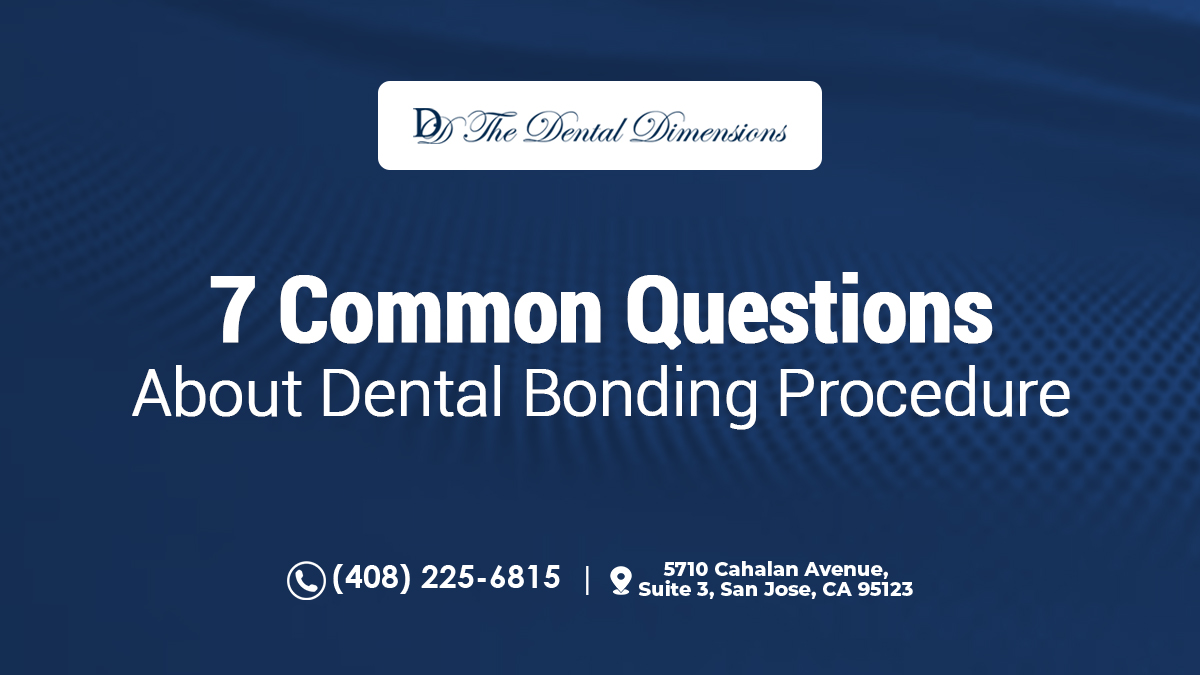Dental issues like chipped, discolored, or slightly misaligned teeth can impact your confidence and self-esteem. Thankfully, dental bonding offers a simple yet effective solution to address these concerns. If you’re considering dental bonding in San Jose, you likely have some questions about the procedure.
In this article, we’ll address seven common questions to help you better understand the dental bonding process, as explained by the experts at Dental Dimensions.
1. What is Dental Bonding?
Dental bonding is a cosmetic dental procedure where a tooth-colored resin material is applied to the surface of your teeth. This material is then sculpted, shaped, and polished to match the natural appearance of your teeth, effectively correcting imperfections.
2. What Issues Can Dental Bonding Address?
Dental bonding is versatile and can address various cosmetic concerns, including chipped or cracked teeth, gaps between teeth, tooth discoloration, and minor misalignments.
3. How is Dental Bonding Performed?
The dental bonding procedure involves several steps. First, the dentist will prepare the tooth by roughening the surface slightly and applying a conditioning liquid. Then, the tooth-colored resin is applied, molded, and shaped. Once the desired shape is achieved, a special light is used to harden the resin. Finally, the bonded tooth is polished to blend seamlessly with your natural teeth.
4. Is Dental Bonding Painful?
Dental bonding is typically painless and minimally invasive. Anesthesia is usually not required unless the bonding is being used to fill a cavity. Most patients find the procedure comfortable and experience minimal to no discomfort.
5. How Long Does the Procedure Take?
The duration of the dental bonding procedure varies depending on the number of teeth being treated. On average, bonding a single tooth takes about 30 to 60 minutes. If you’re getting multiple teeth bonded, the process may take longer.
6. How Long Does Dental Bonding Last?
With proper care and maintenance, dental bonding can last several years. However, it’s important to note that bonding materials are not as durable as porcelain restorations or dental crowns. Avoid habits like biting on hard objects and refrain from using your teeth to open packages to prolong the longevity of the bonding.
7. What are the Advantages of Dental Bonding?
Dental bonding offers numerous advantages, including affordability, minimal tooth reduction, and quick results. It’s a conservative treatment that can enhance your smile without extensive procedures.
Conclusion
Dental bonding is an excellent option for individuals looking to enhance their smiles without invasive procedures. Whether you have chipped teeth, gaps, or discoloration, dental bonding can provide a natural-looking solution. If you’re interested in dental bonding in San Jose, The Dental Dimensions is here to provide expert care and address any questions or concerns you may have.
Contact us today to schedule a consultation and discover how dental bonding can transform your smile with minimal time and effort.



